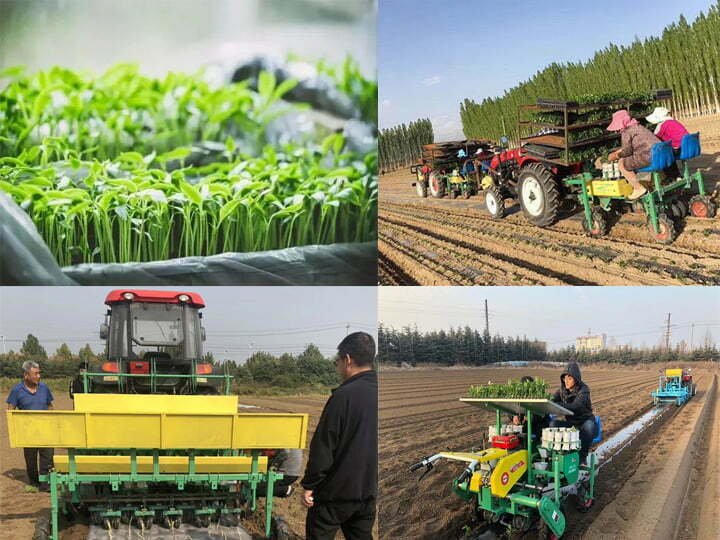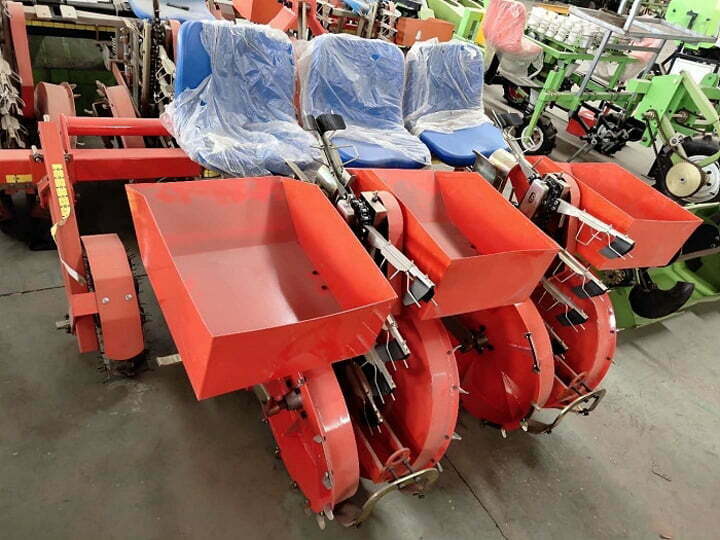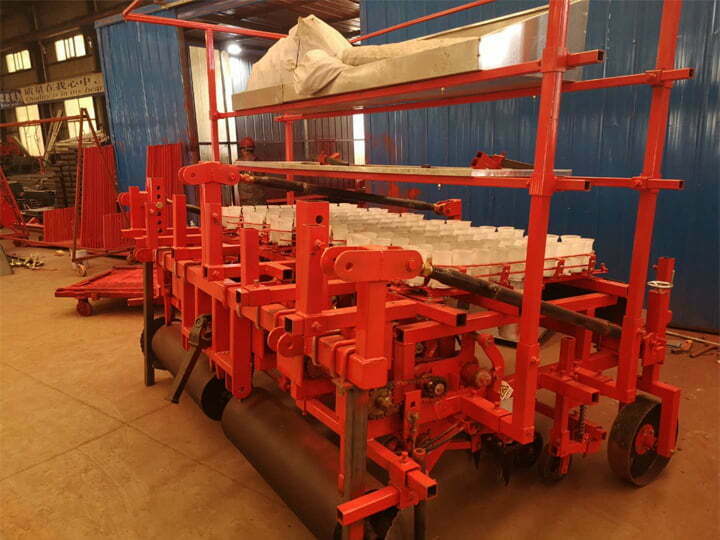The Necessity of Mechanized Transplanting
Seedling transplanting technology can make full use of light and heat resources and has a compensation effect on climate, which is more economical for land use. It can increase the multiple cropping index of crops, advance the growth period of crops by about 15 days, and effectively avoid the adverse effects of early spring low temperature, late spring cold, frost, hail, and other climates. It also avoids natural disasters such as pests and drought, increases the survival rate of seedlings, and ensures that each crop meets the planting requirements.
Because the seedbed occupies less land and the seedlings are relatively concentrated, the germination period and seedling period are easy to manage. The temperature of the seedbed is easier to manually control, which can reduce the chance of virus transmission and help control or reduce the occurrence of virus diseases. The mechanized transplanting can extend the growth cycle of crops, improve the quality of crops, and increase yield by more than 10%. At present, the crops applying seedling transplanting technology mainly include tomato, pepper, lettuce, green onion, cabbage, and other vegetable crops, rape, tobacco, cotton, sugar beet, various Chinese herbal medicines, and other economic crops, corn, and other food crops. According to the different habits of these crops, we also specially researched and produced hand transplanter, water wheel transplanter, hemp transplanter, tree transplanter, etc.

The manual transplanting is labor-intensive, low-efficiency, and uneven row spacing after transplanting, which affects subsequent plant protection and harvesting operations. With the increasing maturity of factory nursery seedling technology and rising labor costs, large-scale transplanting seedling need to be completed by transplanting machinery.
Development History of Transplanter Machine
In the 1950s, China began to study seedling transplanting machines. The earliest experiments on cotton seedling transplanting machines and sweet potato seedling transplanting machines.
In the 1970s, the bare-root seedling transplanting machine was developed, which was first used for sugar beet transplanting.
In the 1980s, semi-automatic vegetable transplanting machines were successfully developed. At the same time, a variety of transplanting machines suitable for economic crops such as vegetable transplanter machines, tobacco transplanter machines, and sugar beets transplanter machines were introduced from other countries. But they are not used widely because of poor stability and low productivity.
After the 1980s, China’s transplanting machinery developed rapidly. According to the literature, in 1979, the Agricultural Machinery Institute of Wenjiang District, Sichuan Province developed the 2ZYS-4 clamp-type transplanter machine, and the Beijing Agricultural Machinery Institute developed the 2ZSB-2 pot seedling transplanter and the 2ZWS type transplanting machine for naked vegetable seedlings in 1980 and 1991, respectively. At present, the transplanting machines that have been developed are mainly semi-automatic. The fully automatic transplanter is still in the research stage.
Introduction to Transplanter Machine Models
Chain clip transplanter machine
Except for the transmission mode, the working principle of the chain clip transplanter machine is the same as that of the clamp type transplanter machine. These two transplanting machines are simple in structure, stable in plant spacing, and transplanting depth, but the operating speed is low, generally 30 or 40 plants/min. They are easy to pinch the seedlings, and the transplanted seedlings are prone to dumping and being buried by the soil.

Seedling tube transplanter machine
The movement of seedlings in the guide tube is free, so it is not easy to damage the seedlings. The feeder is composed of multiple rotating feeding tubes. When feeding manually, the feeding speed can be increased (the operating speed can reach 60-70 plants/min), which is 30%-50% higher than the chain clip transplanter machine. However, the structure of the feeding mechanism of this transplanting machine is relatively complicated and the cost is relatively high.

Conveyor belt transplanter
The seedling conveying mechanism consists of a horizontal conveyor belt and an inclined conveyor belt, and the movement speeds of the two conveyor belts are different. When the machine is working, the seedlings move upright on the horizontal conveyor belt and fall over on the inclined conveyor belt at the end of the horizontal conveyor belt. When the seedlings move to the end of the inclined belt, the pot seedlings are turned upright and fall into the seedling ditch. Then cover the soil to suppress and complete the operation. This kind of transplanting machine has a simple mechanism and high transplanting efficiency, but the reliability of transplanting is poor and the quality of transplanting is low.
Disk type transplanter machine
The seedling can be clamped without being limited by the number of clamps or chain clamps. Therefore, its adaptability to plant spacing is good, and the structure is simple and practical, but plant spacing and transplanting depth are unstable, and seedlings are easily embedded. At the same time, the flexible disc has a short lifespan.
In recent years, with the development of seedling raising technology and rising labor costs, the research and development of transplanting machinery have been promoted, and the development of agricultural production has been accelerated. The emergence of new technologies and techniques provides a good prospect for the development of transplanter machines.
